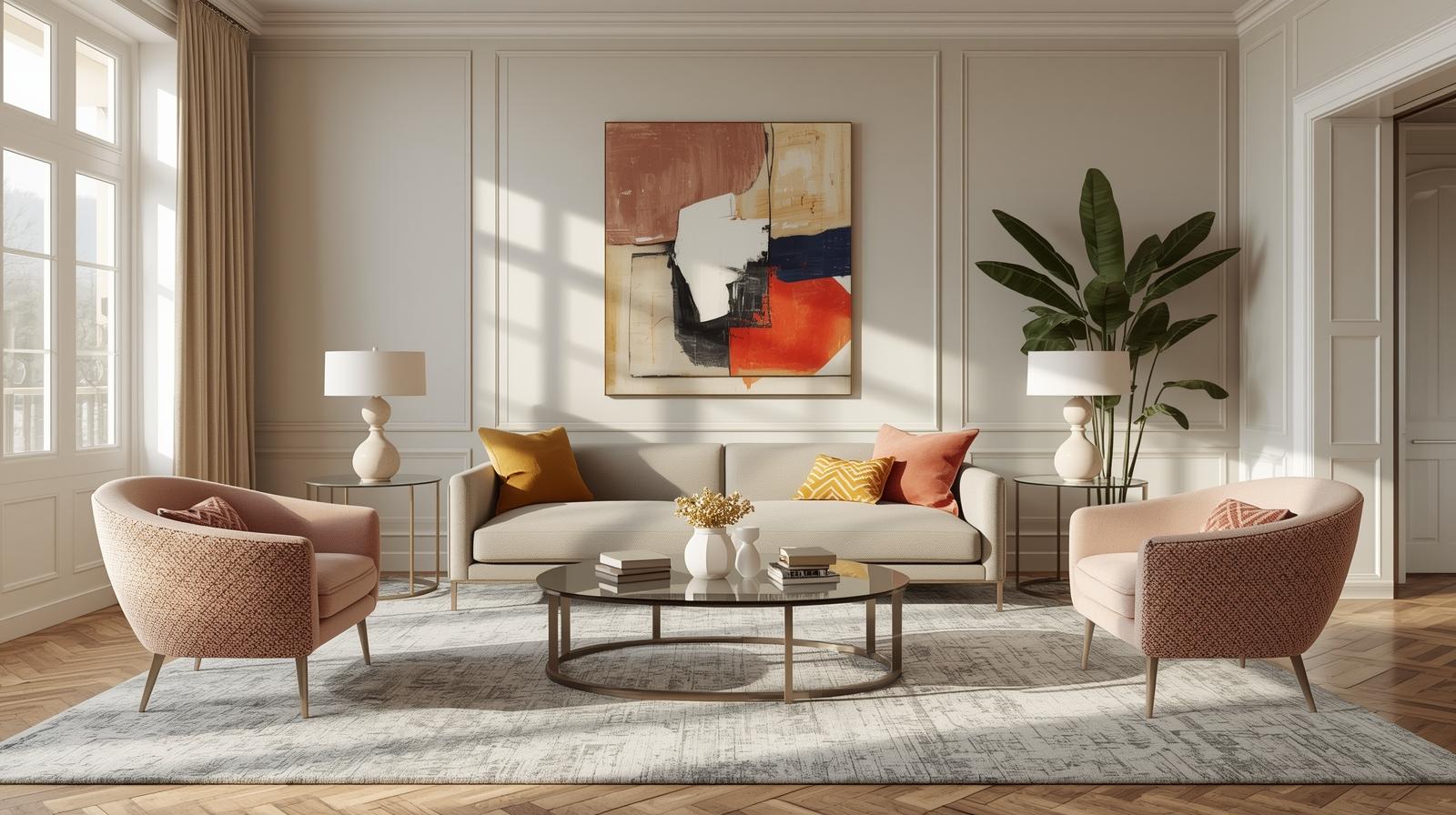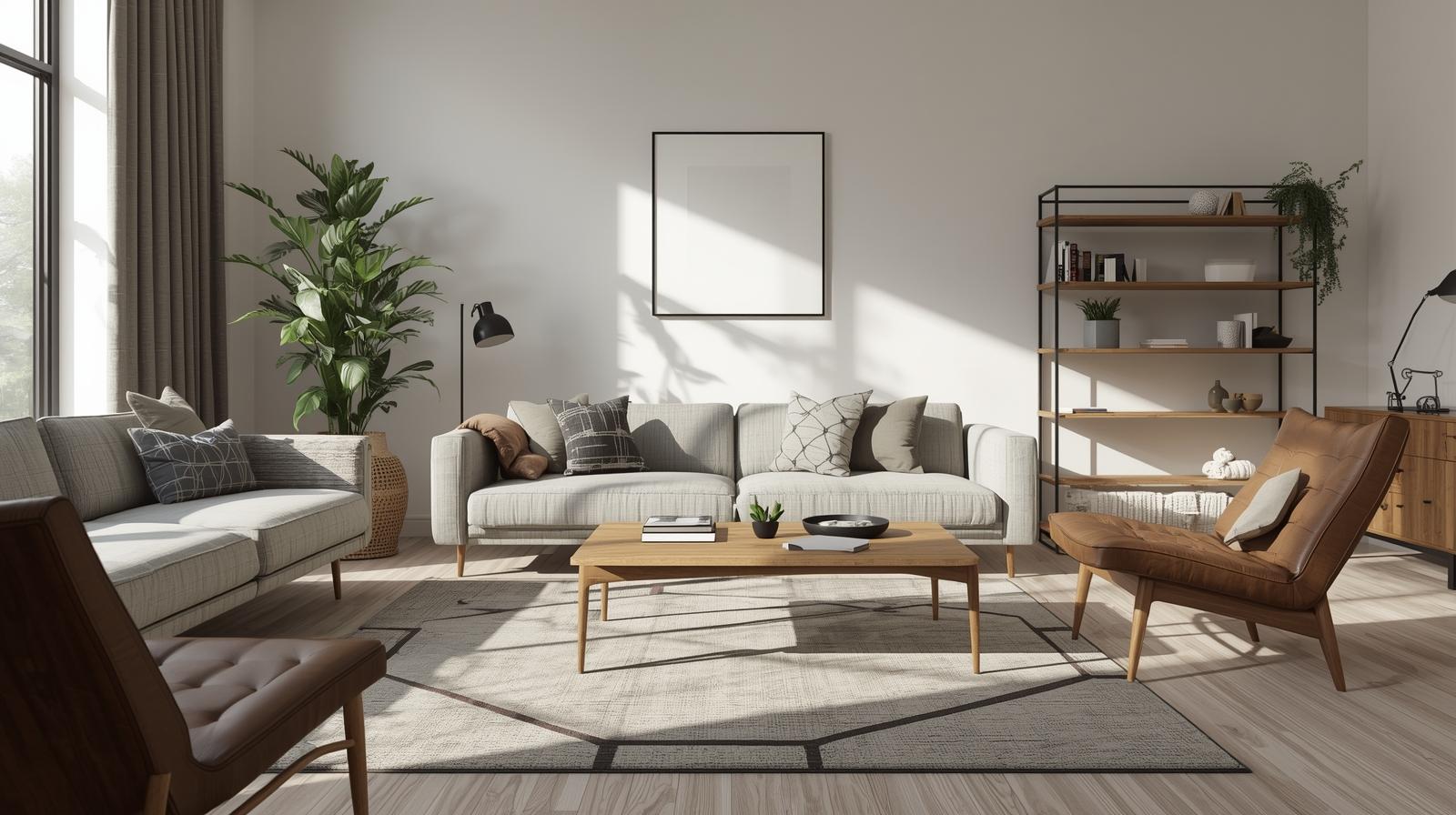Modern Furniture vs Contemporary Furniture: Complete Guide

Table of Contents
Introduction: Decoding Design Terminology
In the vast and often nuanced world of interior design, terms like “modern” and “contemporary” are frequently used interchangeably, leading to confusion. While both styles represent a departure from traditional aesthetics, they are distinct in their origins, defining characteristics, and evolution.
Understanding Modern Furniture vs Contemporary Furniture is crucial for homeowners in the UK looking to curate a cohesive and authentic living space.
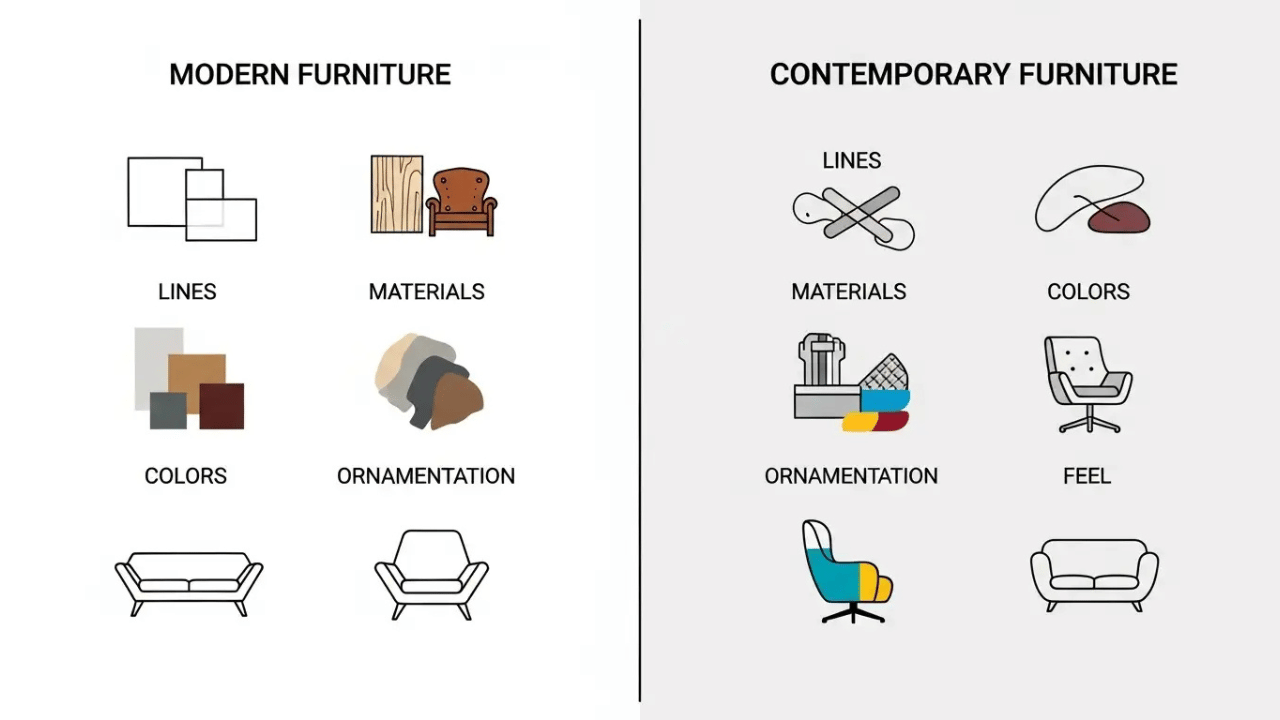
This guide will differentiate these two popular design styles, exploring their historical contexts, key features, and how they manifest in furniture design. By clarifying these distinctions, you can make informed choices that truly reflect your desired aesthetic and functional needs.
Modern Furniture: A Historical Perspective
Modern furniture refers to a specific design movement that emerged in the late 19th and early 20th centuries, reaching its peak in the mid-20th century. It was a radical departure from the ornate, decorative styles of the Victorian and Art Nouveau eras, driven by a desire for simplicity, functionality, and mass production.
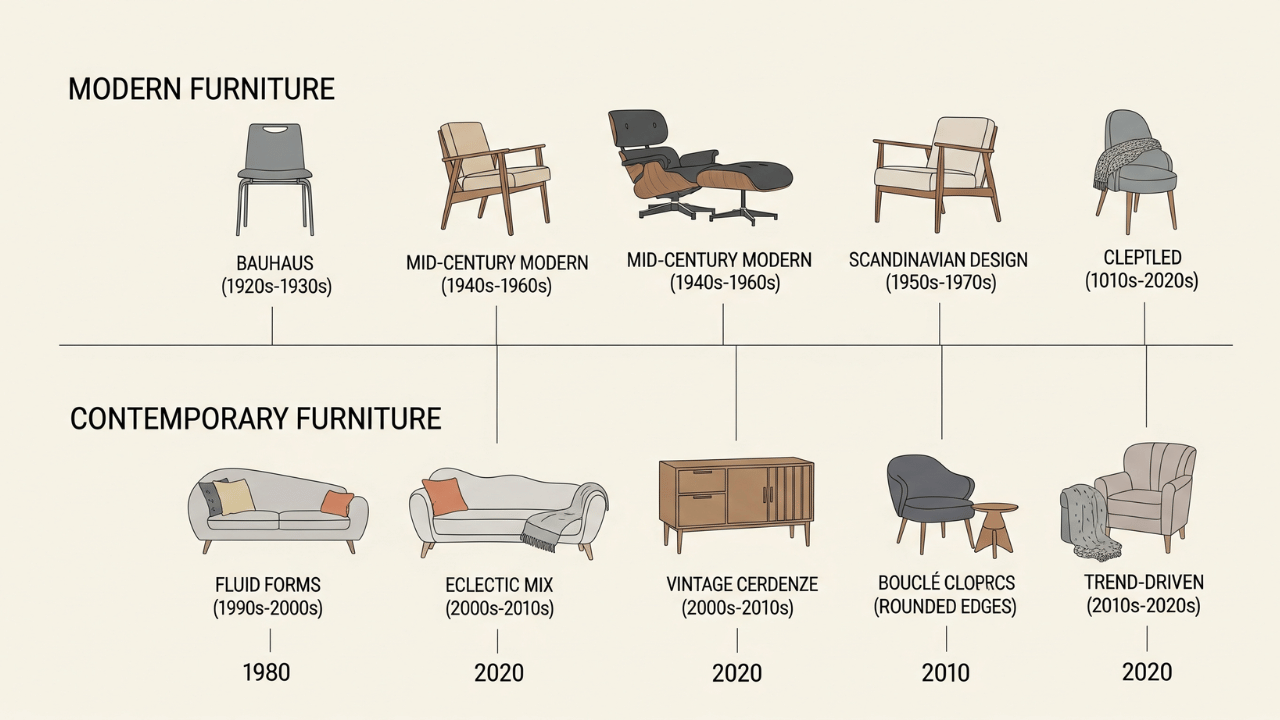
The philosophy behind modern design was rooted in the idea that form should follow function, emphasizing clean lines, unadorned surfaces, and natural materials. Key influences include:
- Bauhaus School: A German art school that championed the idea of combining art and craft with technology, producing functional and aesthetically pleasing designs for everyday objects.
- Mid-Century Modern: A post-World War II movement (roughly 1945-1969) characterized by organic shapes, innovative use of materials (plywood, plastic, fiberglass), and a playful yet functional aesthetic. Iconic designers like Charles and Ray Eames, Eero Saarinen, and Arne Jacobsen are synonymous with this era.
- Scandinavian Modern: Emphasizing simplicity, minimalism, and functionality, often using light-colored wood and natural textiles, designed to bring warmth and light into homes during long winters.
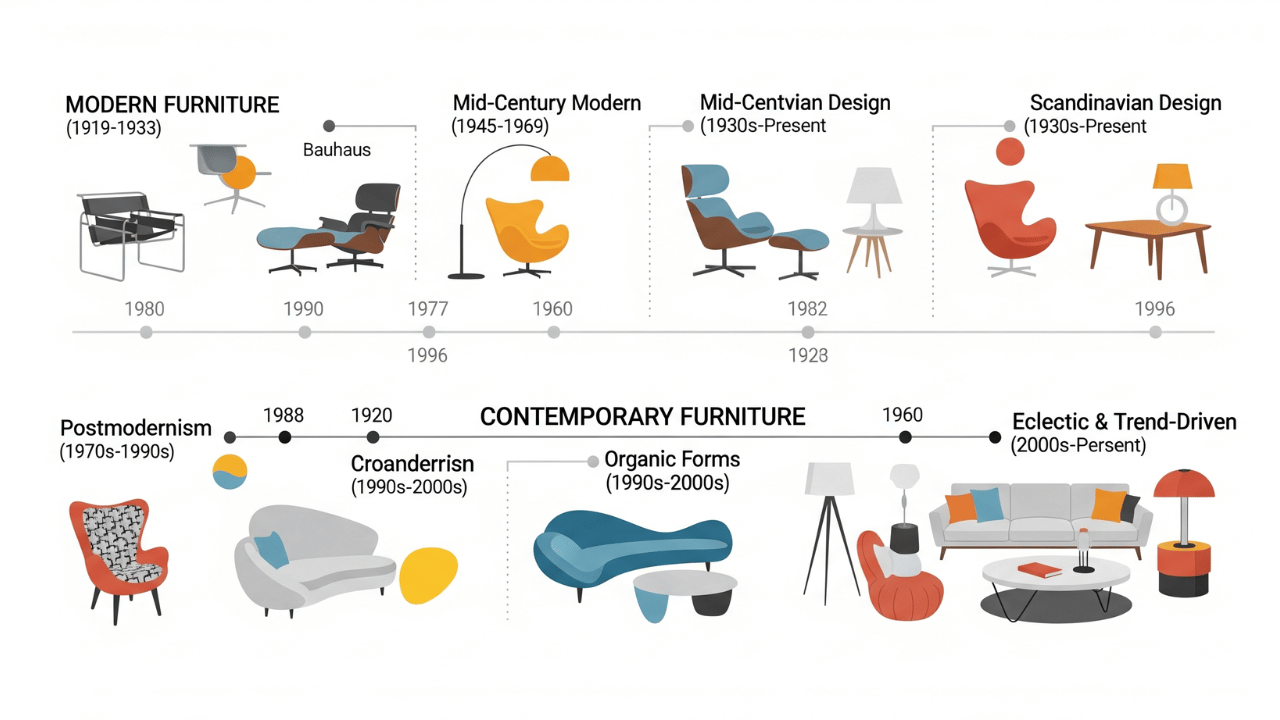
Key Characteristics of Modern Furniture:
- Clean Lines and Geometric Shapes: Straight lines, rectangles, and circles are prevalent, with a focus on structural clarity.
- Minimal Ornamentation: A rejection of excessive decoration; beauty is found in the material and form itself.
- Natural Materials: Frequent use of wood (especially teak, walnut, oak), leather, glass, and metal (chrome, steel).
- Functionality: Every piece serves a clear purpose, often designed for efficiency and practicality.
- Neutral Color Palettes: Typically features whites, greys, blacks, and earthy tones, with occasional muted primary colors as accents.
- Exposed Structure: Legs and frames are often visible, highlighting the construction.
Modern furniture, therefore, is a historical style with defined characteristics, even though its principles continue to influence contemporary design.
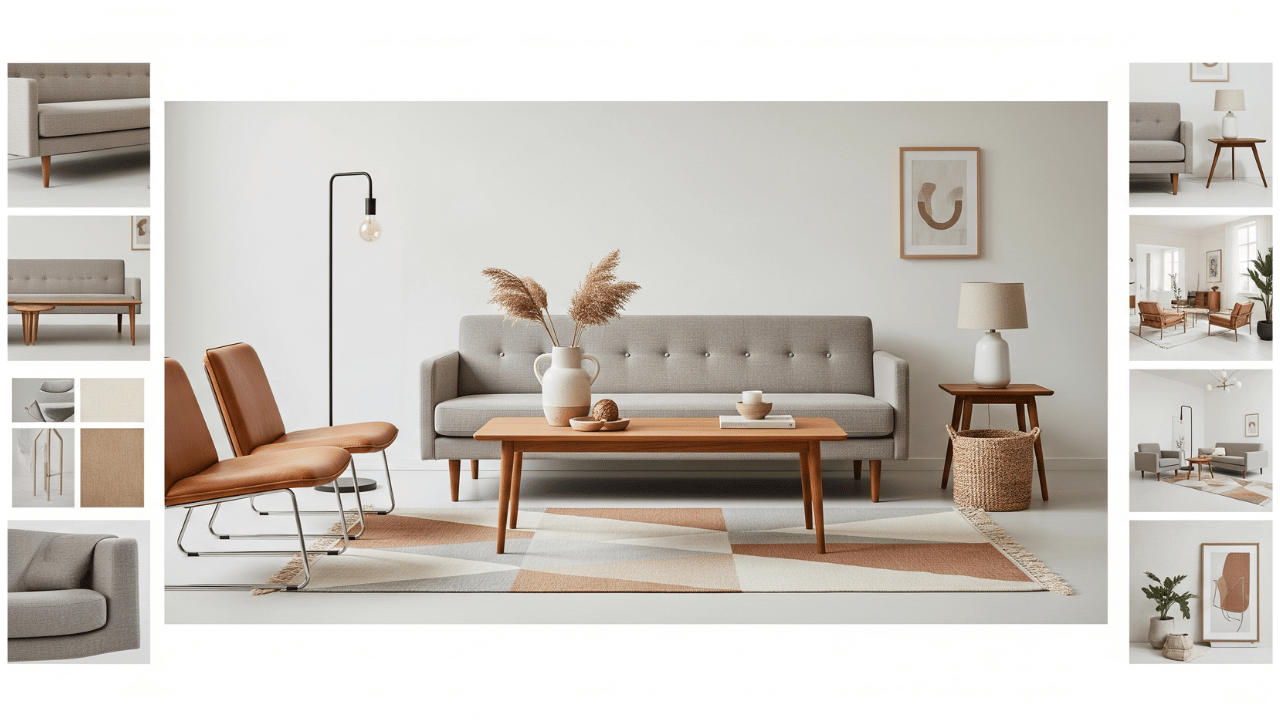
Contemporary Furniture: The Ever-Evolving Present
In contrast to modern, contemporary furniture is not tied to a specific historical period. Instead, it refers to what is current and of the moment. It is an evolving style that borrows elements from various design movements, including modernism, but is not constrained by their rules. Contemporary design is fluid, reflecting current trends, technologies, and cultural influences. It is constantly changing, making it harder to define definitively.
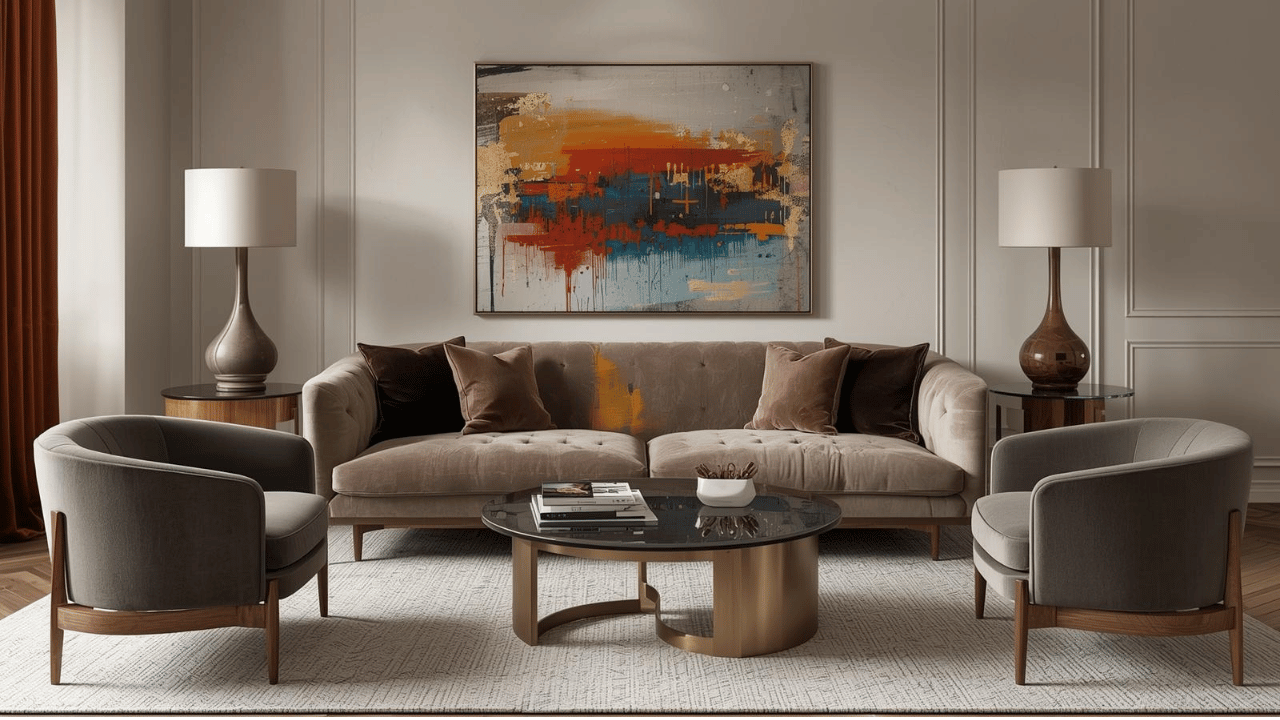
Key Characteristics of Contemporary Furniture:
- Fluid and Adaptable: It is less rigid than modern design, often incorporating curves and softer lines alongside straight ones.
- Eclectic Influences: Draws inspiration from various styles, including modern, minimalist, industrial, and even traditional elements, but reinterprets them for today.
- Mix of Materials: Often combines diverse materials in unexpected ways, such as glass with concrete, metal with natural wood, or high-tech composites with traditional fabrics.
- Emphasis on Comfort and Livability: While still valuing aesthetics, there’s a strong focus on creating comfortable and inviting spaces.
- Current Trends: Reflects what is popular and cutting-edge in design right now, which means it can change rapidly.
- Neutral Base with Bold Accents: Often uses a neutral foundation (greys, whites, blacks, browns) but is more open to incorporating vibrant colors, textures, and patterns as accents.
- Technological Integration: More likely to incorporate smart features, integrated lighting, and charging solutions.

Contemporary furniture is essentially a living style, always adapting and evolving. What is contemporary today may not be in five or ten years, whereas modern design will always refer to its specific historical period.
Key Differences Between Contemporary & Modern Furniture
To further clarify the distinction, here’s a comparative table:
| Feature | Modern Furniture | Contemporary Furniture |
| Definition | A specific historical design movement (19th-mid 20th century) | What is current and evolving right now |
| Lines/Shapes | Clean, straight lines; geometric shapes | Fluid, curved lines; can be more organic or eclectic |
| Materials | Natural materials (wood, leather, glass, metal) | Mix of natural and man-made materials; often innovative |
| Ornamentation | Minimal; form follows function | Minimal, but can incorporate more decorative elements if trendy |
| Color Palette | Neutral (whites, greys, blacks, earthy tones) | Neutral base with bolder, trend-driven accents |
| Evolution | Fixed historical style | Constantly changing and adapting |
| Feel | Often structured, disciplined, timeless | Often fresh, current, adaptable, sometimes experimental |
How to Choose Between Modern and Contemporary for Your UK Home
Deciding between modern and contemporary furniture depends on your personal aesthetic, the architectural style of your home, and your long-term design goals.
Choose Modern if…
- You appreciate timeless design with a clear historical lineage.
- You prefer clean, uncluttered spaces with a focus on natural materials.
- You value functionality and simplicity above all else.
- Your home has architectural features that align with mid-century or Bauhaus aesthetics.
- You want a disciplined, cohesive look that won’t go out of style.
Choose Contemporary if…
- You want your home to reflect current trends and be constantly updated.
- You enjoy mixing different styles and materials.
- You prefer a more fluid, adaptable, and perhaps experimental aesthetic.
- You are open to incorporating new technologies into your furniture.
- You want a space that feels fresh, dynamic, and reflective of the present moment.
Many homeowners in the UK find themselves drawn to elements of both. It’s perfectly acceptable to blend styles, creating an eclectic yet harmonious space. For instance, a modern sofa with clean lines can be paired with contemporary accent chairs that feature unique textures or bold colors. The key is to ensure there’s a unifying element, whether it’s a consistent color palette, a shared material, or a similar scale.
Integrating Modern and Contemporary Elements
For those who appreciate both the timeless appeal of modern design and the fresh vibrancy of contemporary trends, successful integration is possible. Here’s how:
- Start with a Neutral Base: Use a neutral color palette for walls and larger furniture pieces (like a sofa) to create a calm backdrop. This allows you to introduce elements from both styles without clashing.
- Mix Materials Thoughtfully: Pair a classic wooden modern dining table with contemporary chairs made of metal and fabric. The contrast in materials can add visual interest.
- Vary Textures: Introduce different textures to add depth. A sleek, modern leather sofa can be softened with contemporary velvet cushions or a chunky knit throw.
- Play with Shapes: Combine the straight lines of modern furniture with the curved or organic shapes often found in contemporary pieces. For example, a rectangular modern coffee table with a round, sculptural contemporary vase.
- Use Art and Accessories: These are excellent ways to introduce contemporary flair into a predominantly modern space, or vice versa. A bold, abstract contemporary painting can energize a minimalist modern room.
- Lighting as a Bridge: Modern and contemporary lighting fixtures often share a focus on clean lines and innovative forms. Choose lighting that complements both styles.
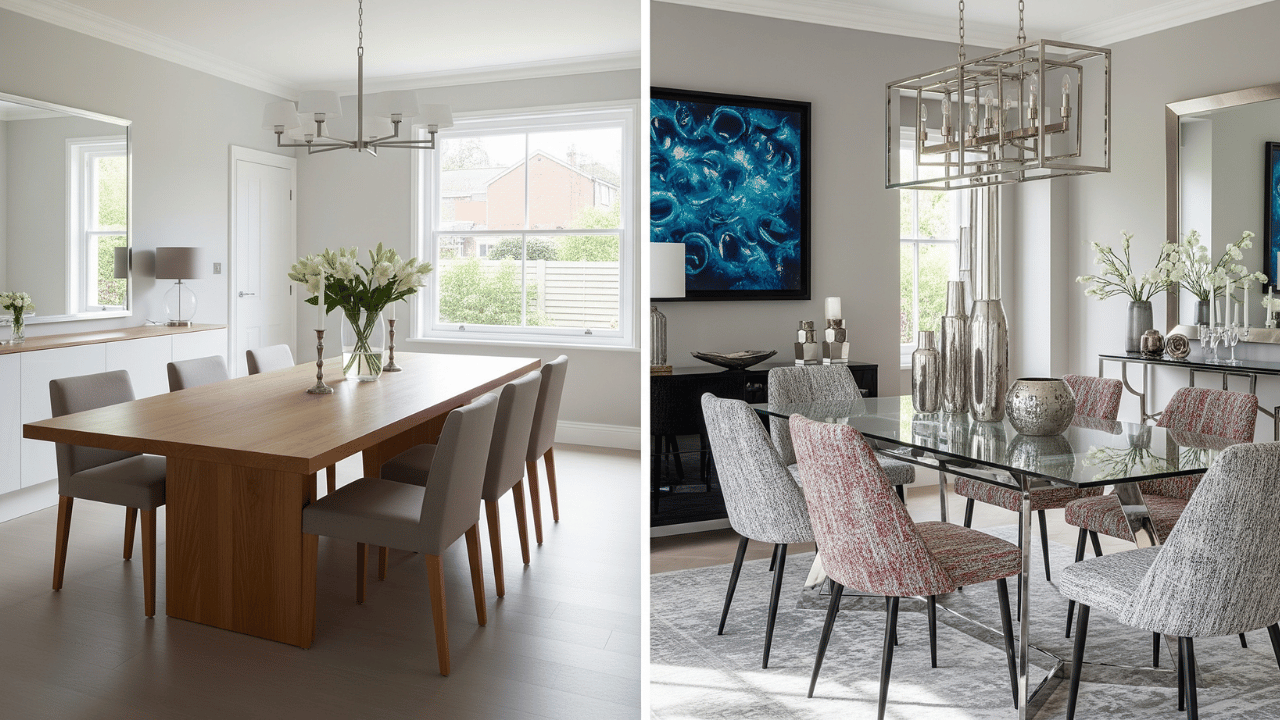
The goal is to create a dialogue between the two styles, where each element enhances the other, resulting in a unique and personalized interior that feels both classic and current.
Conclusion: Your Home, Your Style
While the terms “modern” and “contemporary” have distinct meanings in the world of furniture design, both offer compelling aesthetics for the UK home. Modern design provides a foundation of timeless simplicity and functionality, rooted in a rich historical movement. Contemporary design, on the other hand, offers the excitement of the present, constantly evolving and embracing new ideas. By understanding these differences, you are empowered to make deliberate choices that shape your living spaces. Whether you lean towards the enduring elegance of modernism, the dynamic appeal of contemporary trends, or a thoughtful blend of both, Heaven & Homes offers a curated selection of furniture that embodies quality, style, and adaptability, helping you create a home that truly reflects your unique vision.
Frequently Asked Questions
No. Modern furniture refers to a historical design movement (late 19th–mid 20th century) with defined principles like clean lines and natural materials. Contemporary furniture, on the other hand, is ever-changing and reflects current design trends.
Modern furniture is considered timeless because it’s tied to a specific design philosophy that doesn’t change. Contemporary furniture evolves with trends, so what looks current today may feel outdated in a few years.
Not exactly. While contemporary furniture borrows from modernism, it also mixes influences from other styles like industrial, minimalist, or even traditional. It’s more about what’s trending right now than following a fixed design principle.
Modern: Teak, walnut, leather, chrome, and glass with a strong focus on natural finishes.
Contemporary: A mix of natural and synthetic materials like metal with fabric, glass with concrete, or sustainable composites with bold finishes.
It depends on your goals. Modern works well if you want a cohesive, minimal, and timeless design. Contemporary is ideal if you like updating your interiors regularly to reflect the latest trends. Many UK homeowners blend both for balance.
Generally, contemporary designs focus more on livability and comfort, incorporating softer lines and ergonomic features. Modern furniture prioritises function and form, which can feel more structured.
Authentic mid-century modern pieces or Bauhaus originals can be quite expensive. Contemporary furniture varies widely in price, often depending on current materials, designer brands, and integrated technology.

